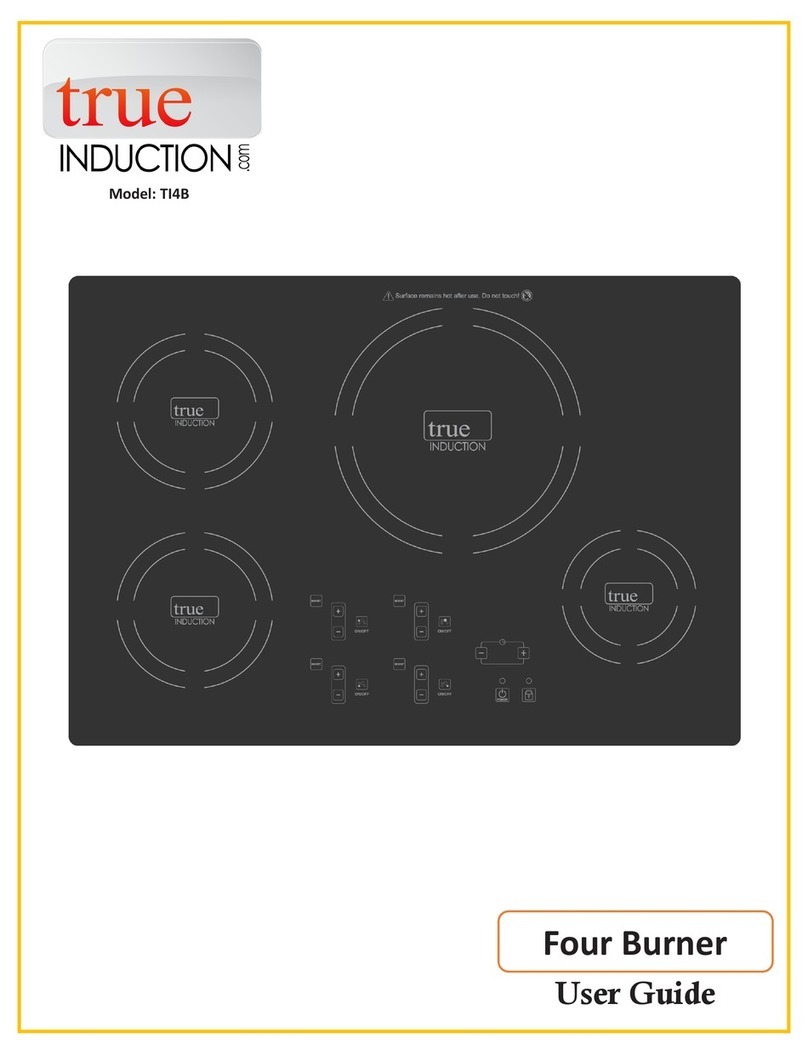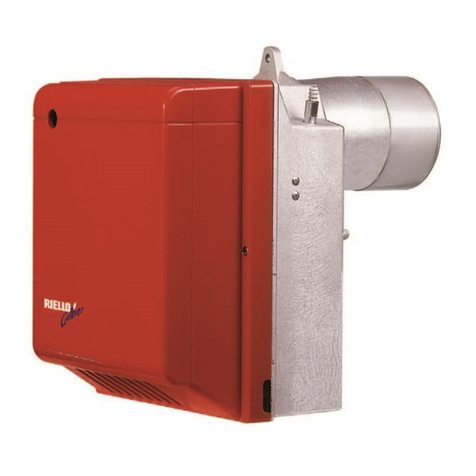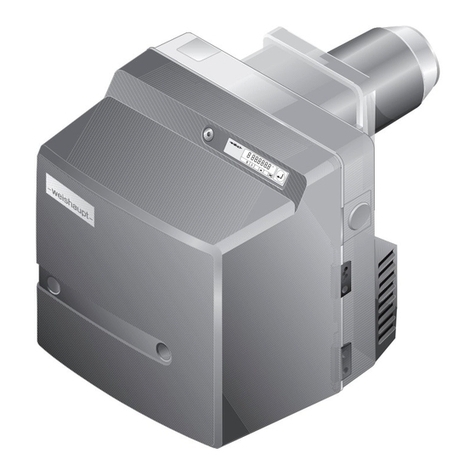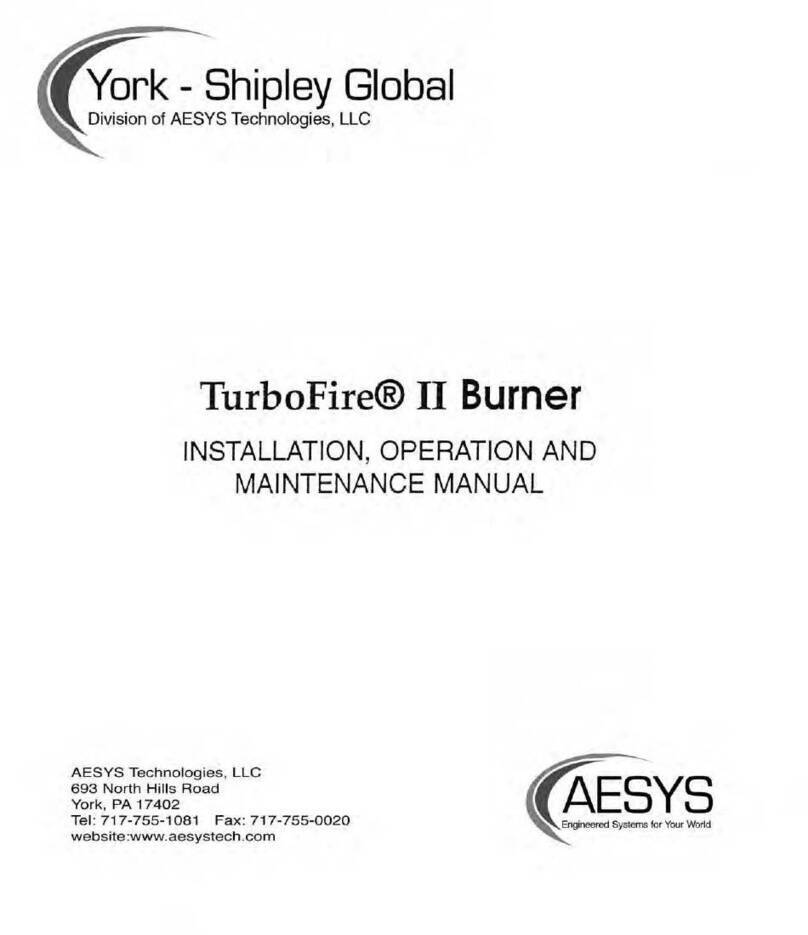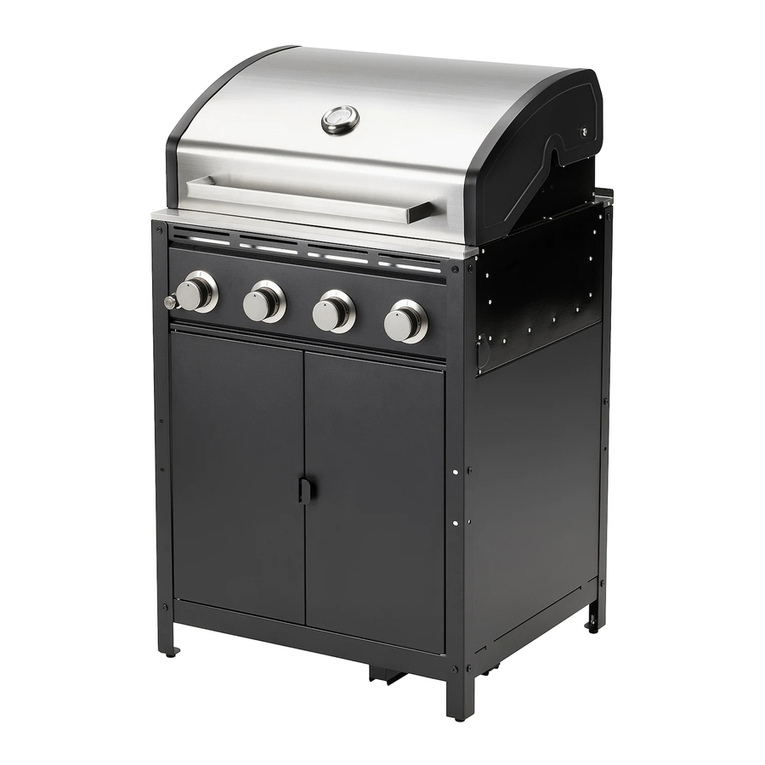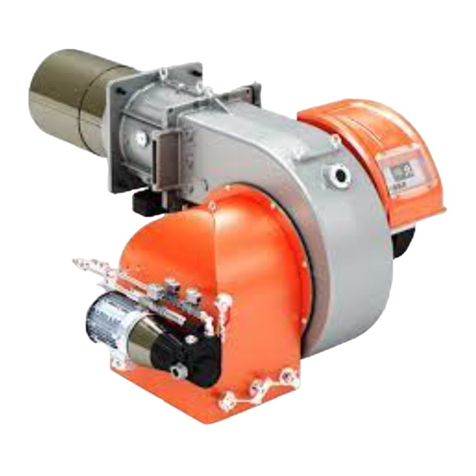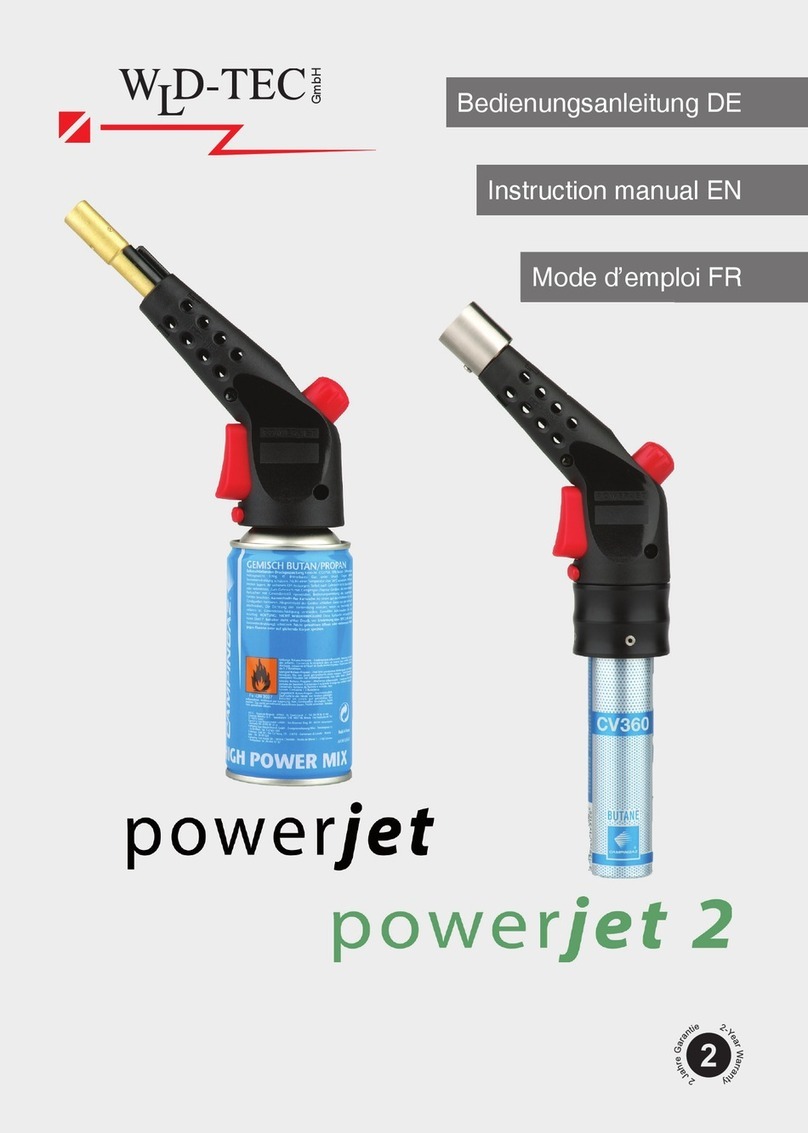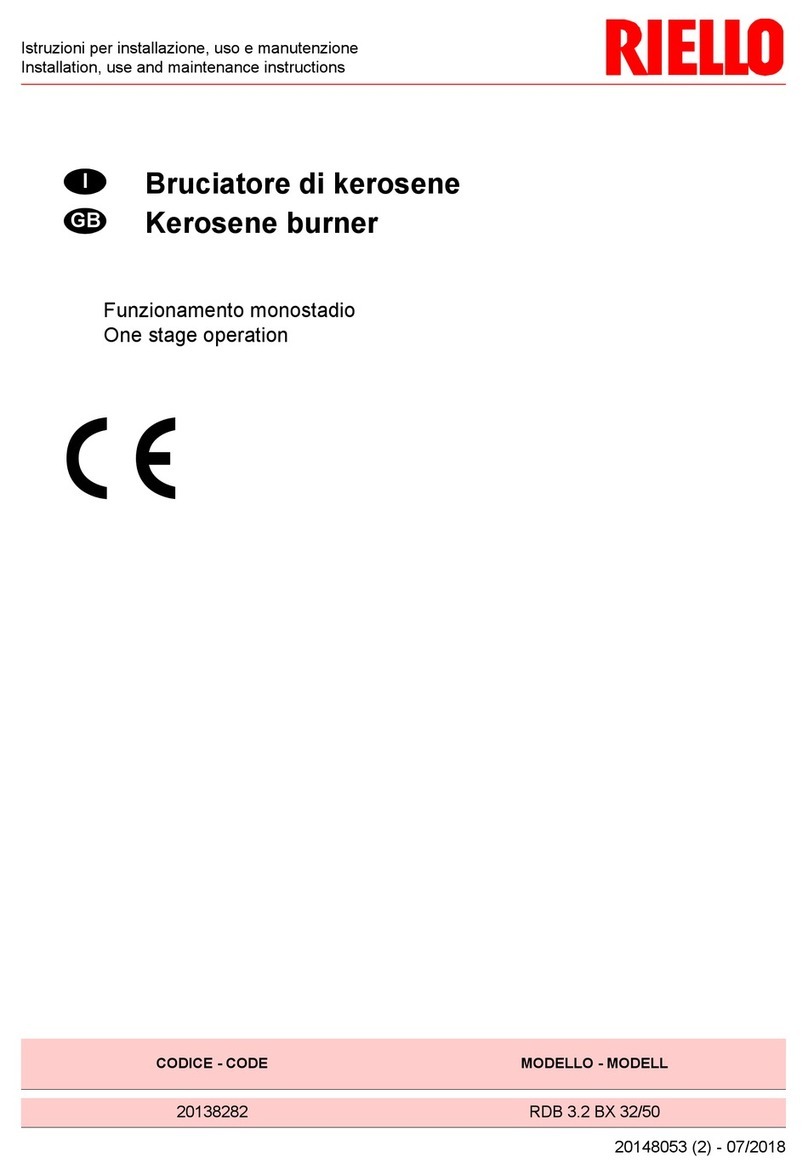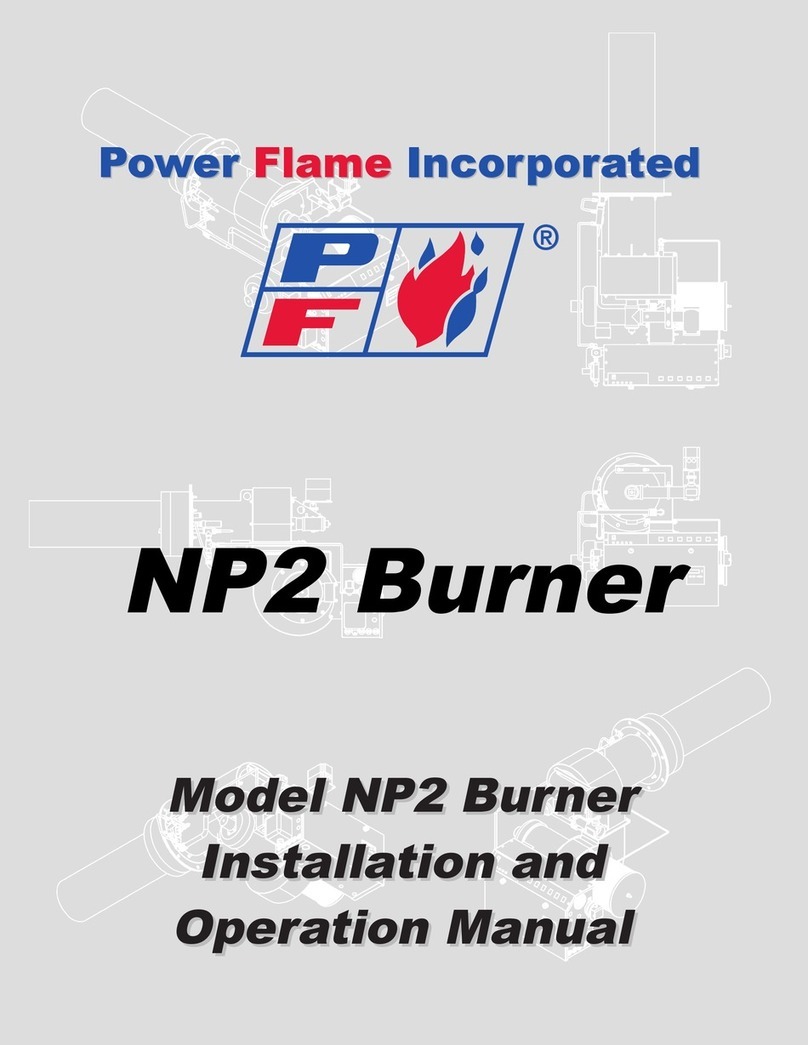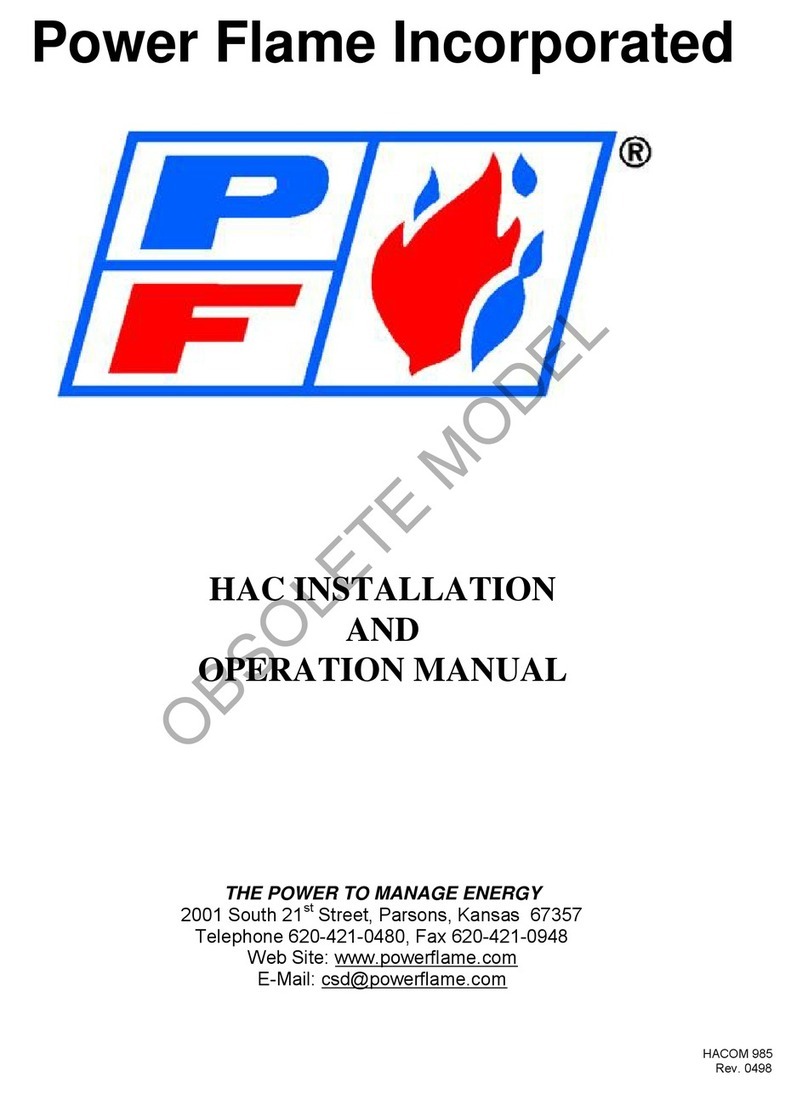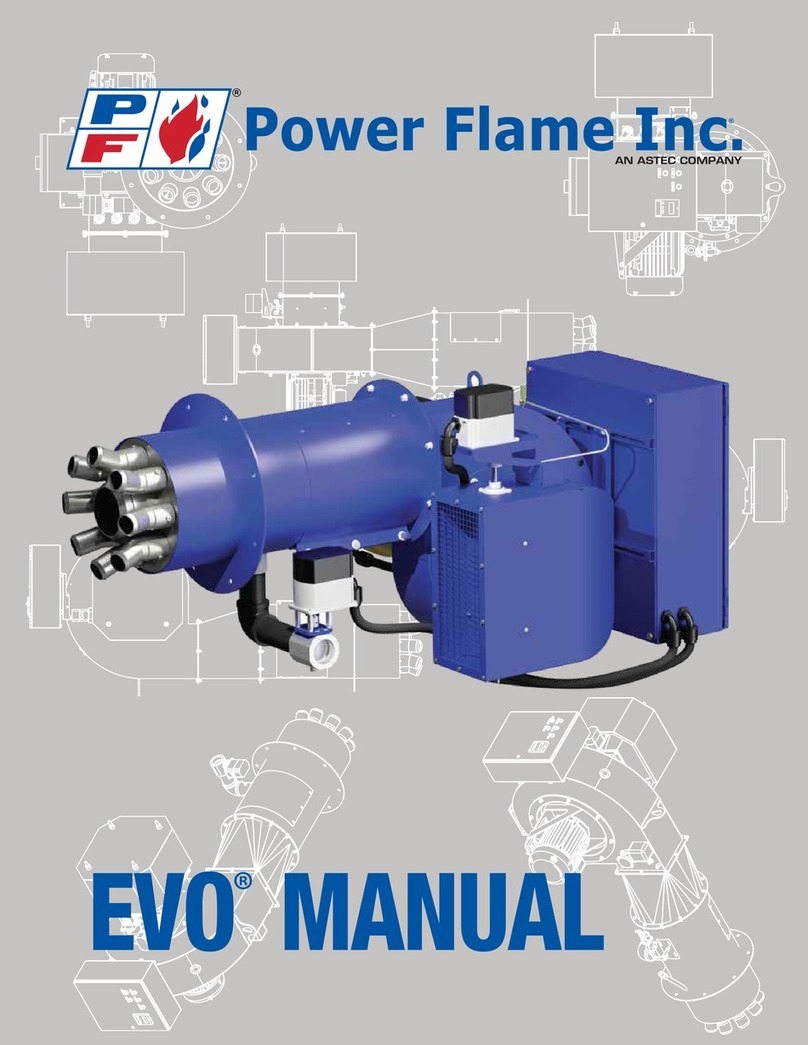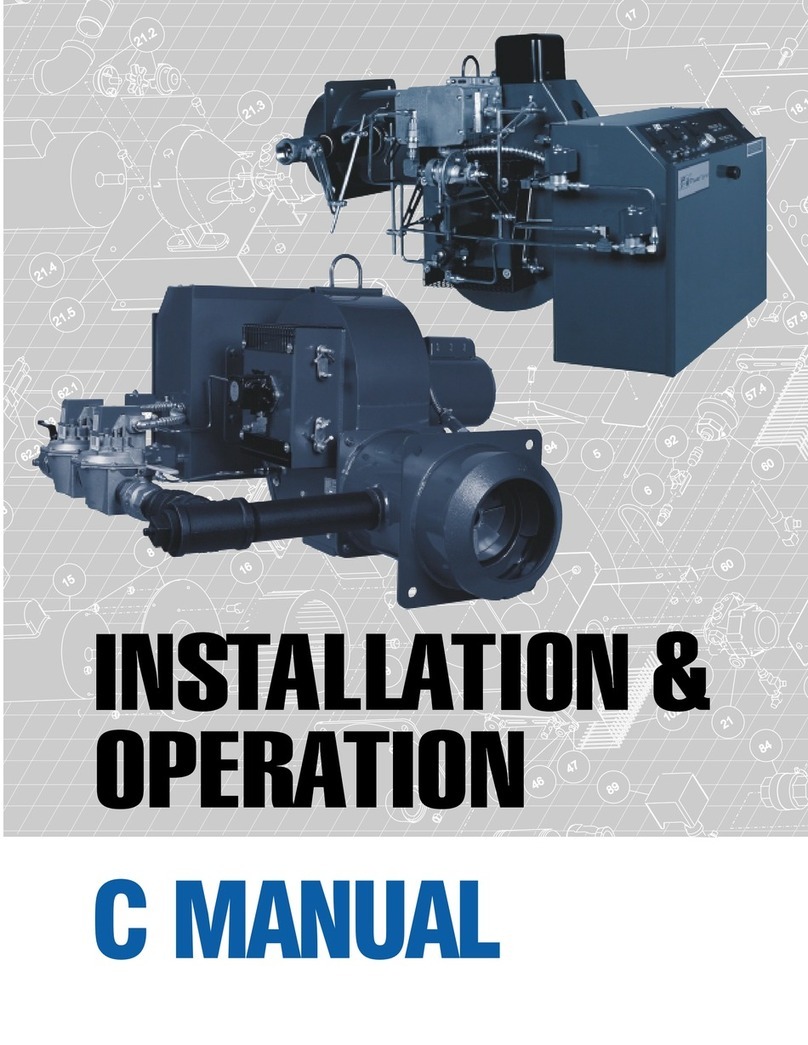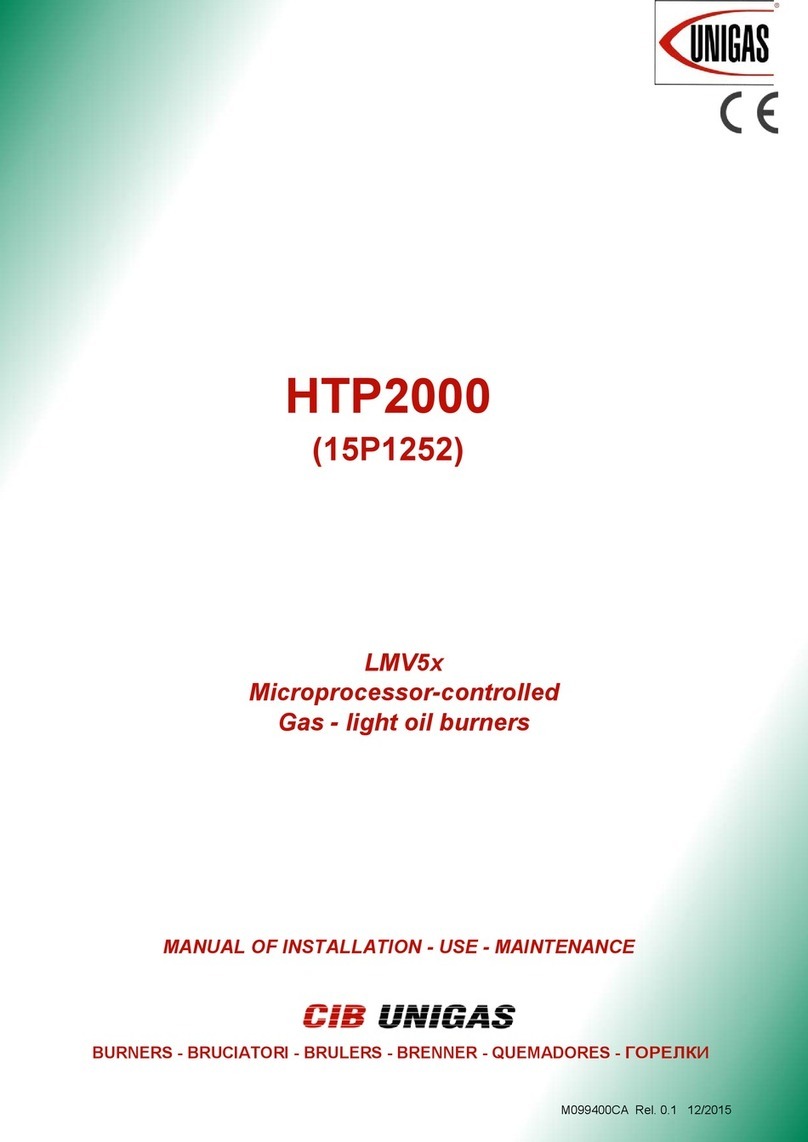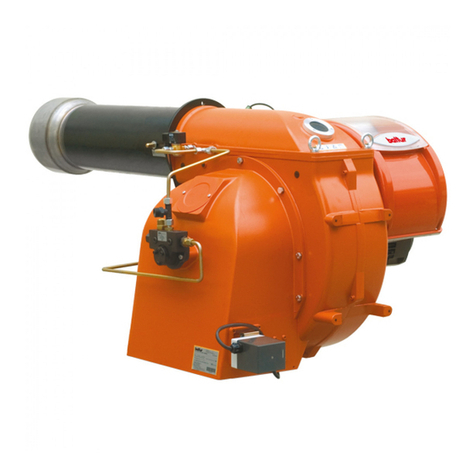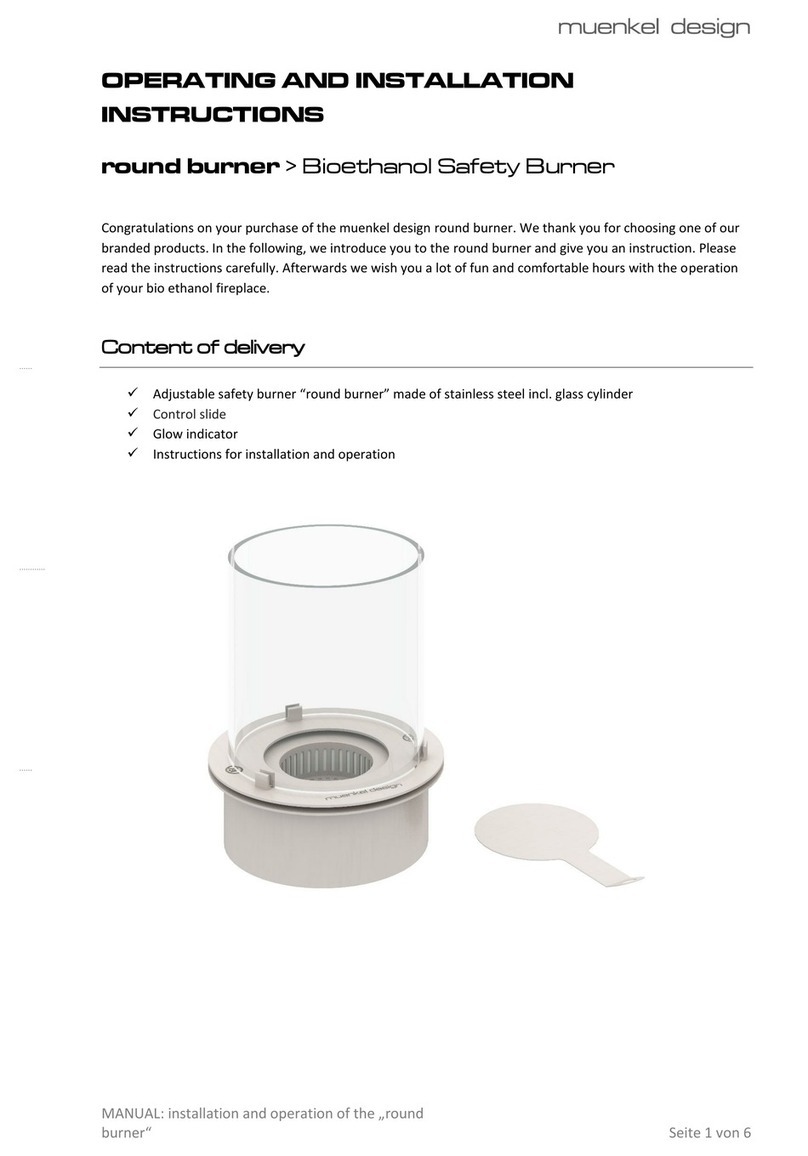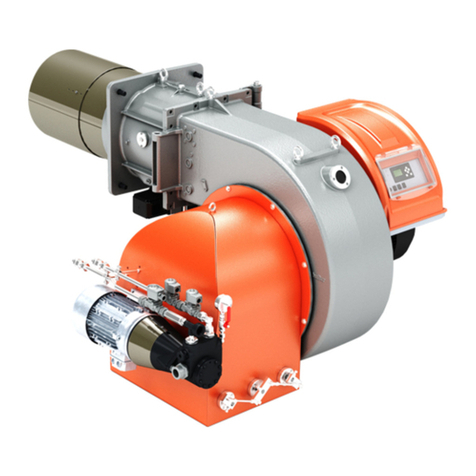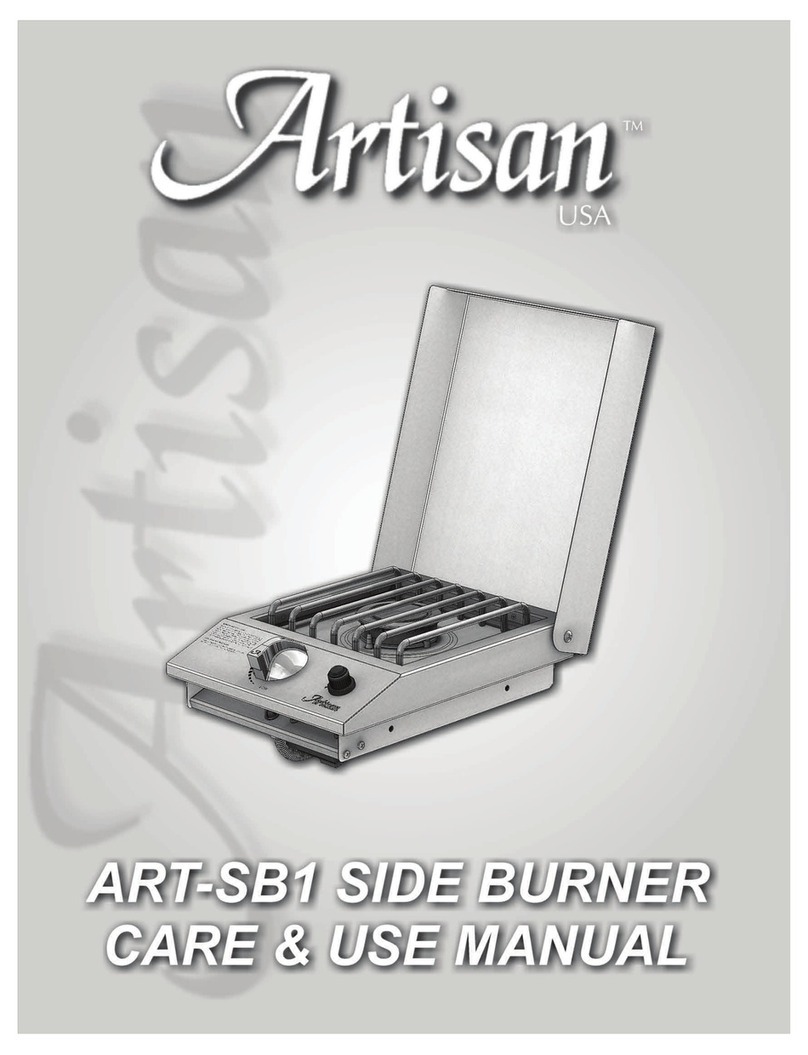
1
1
1.
.G
GE
EN
NE
ER
RA
AL
L
P
PR
RO
OD
DU
UC
CT
T
I
IN
NF
FO
OR
RM
MA
AT
TI
IO
ON
N
1
1.
.1
1
P
Pr
ri
in
nc
ci
ip
pl
le
e
o
of
f
O
Op
pe
er
ra
at
ti
io
on
n
1.1.1The Power FlameModelUCM Burneris aforced draft, highswirl, partial premix/nozzle mix gas burner
which incorporates fluegasrecirculation on bothgasand oilto achieve ultra lowNOx reduction.The
combustionairis furnishedbyanintegrallymountedcombustion air fan.The Power Flamepackaged
combustion systemcan be operated under positiveor negativefurnace pressures with clean,efficient
combustion in awide range ofcombustion chamber conditions.
1.1.2Power FlameModelUCMburner’s highswirl design enables greater flameturbulence at areducedflame
size. As aresult, these burners require less combustion chamber volumeforcomplete combustion and
can be easilyfired under positive furnacepressure conditions.
1.1.3The Power FlameModelUCM burner is atotallypackaged andfactorytestedcombustion systemoffering
singleunit responsibility.The package incorporates accurate control ofthe fuel-air ratiothroughout the
firing range with the resultant controlled flame patterns and clean combustion for maximumefficiency.
1.1.4Combustion air flowis controlledbyamulti-louvered damper assembly.Combustion air is suppliedbyan
integral motor-driven blower, which discharges into the burner blast tube assembly.
1.1.5The air-fuel ratio is established at the timeofstart-upand proven with combustion test equipment to
provide the lowest practicaloxygen and lowest NOx with a cleanflame.
1.1.6AFlameSafeguard Controller programsthe firing cycle. The operatingcycle issequencedto ensure
normal and safeconditions before fuel can be introduced into thecombustion chamber area. The
complete firing cycle is supervised toensure that ignitionofmain flameis properlyestablished and
maintained. Flamemonitoring is provided byeither a lead sulfide or ultraviolet type optical scanner.
1.1.7The limit circuit includes theoperating limit controlto maintain set operating pressure or temperature, as
wellas ahigh limit controlto guard against excessive pressure or temperature.Lowwater and other
similar safetycontrols can be interlocked into theburner control system to satisfyspecific job and/or code
requirements.
1.1.8The control circuit is normally120volts. Acontrolcircuit transformer maybefurnished to provide the 120
volts control circuitfor polyphase motor voltage applications.
1.1.9Power Flame Model UCM burners are capable offiring single or multi-fuel applications. A manual change-
over ofthe particular fuel’s gun assemblyis required.
1.1.10 The pre-wiredControlPanel is mounted and wired asan integralpart ofthe burner in accordance with
recommendations ofUnderwriters Laboratories, Inc. and The NationalElectrical Code.Components are
wired tonumbered terminal strips. Panel and burners are factoryfire tested before shipment.
Comprehensive wiringandgas and/or oilpipingdiagramsare furnishedwitheachburner in accordance
withindividual jobor applicationrequirements. Wall mounted or free standingcontrolpanels are also
available.
1.1.11 PowerFlameModelUCMburners areavailablewithcontrolsystemsto complywiththerequirements of
FactoryMutual, IndustrialRiskInsurers and anyspecialstate,municipal, local and utilitycompanycodes,
including NewYorkCityDepartment ofBuildings (MEA), NYCDepartment ofEnvironmental Protection,
Commonwealth ofMassachusetts, State ofConnecticut Fire Marshall,Illinois School Code and others.
1
1.
.2
2
U
Un
np
pa
ac
ck
ki
in
ng
g
a
an
nd
d
H
Ha
an
nd
dl
li
in
ng
g
1.2.1Power FlameModelUCMburners are usuallyshipped as aunit with anintegrallymounted, pre-wired
control panel. Aremote fuel oilpump-set is shipped separatelyonthe oil andcombinationoil/gas units.


